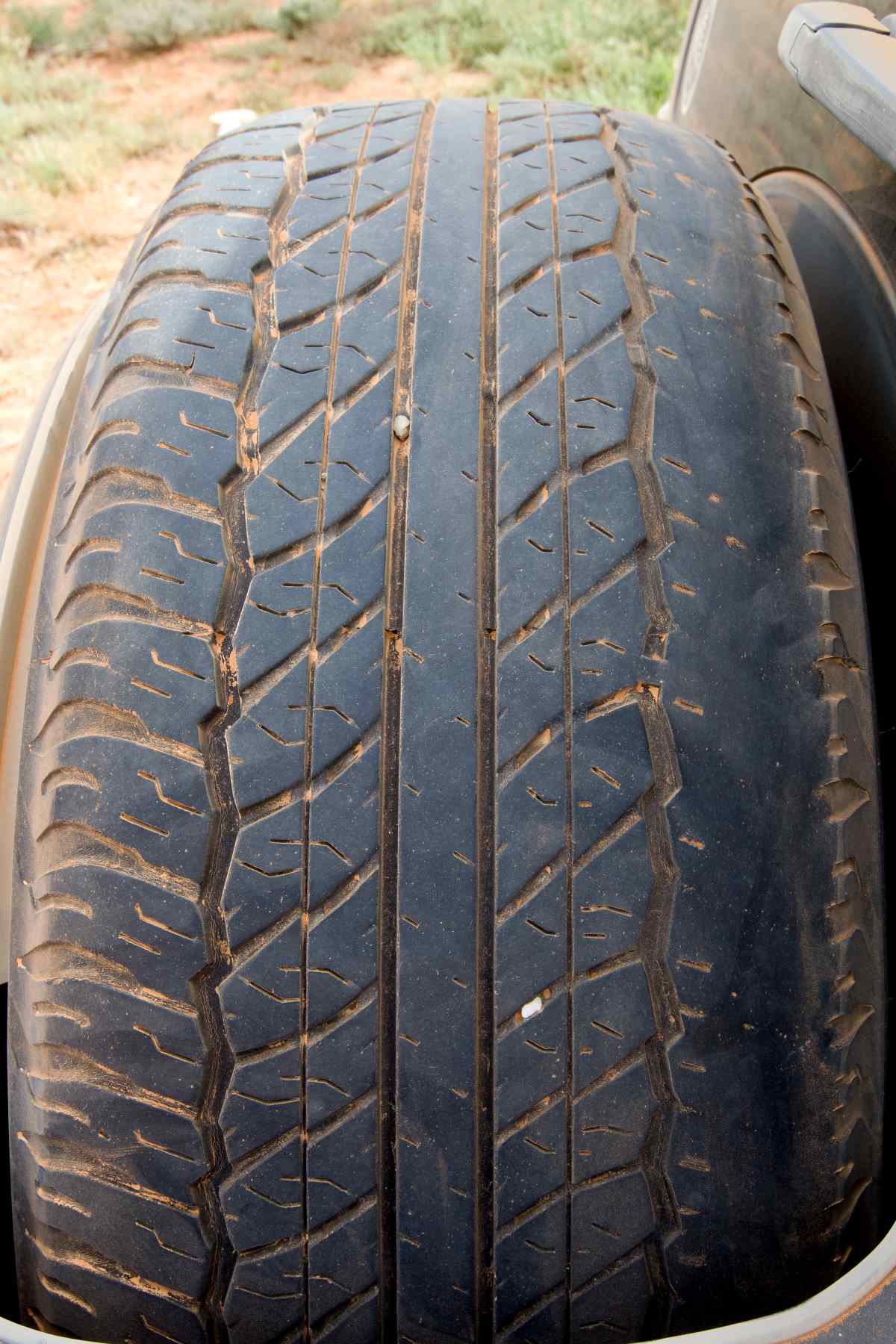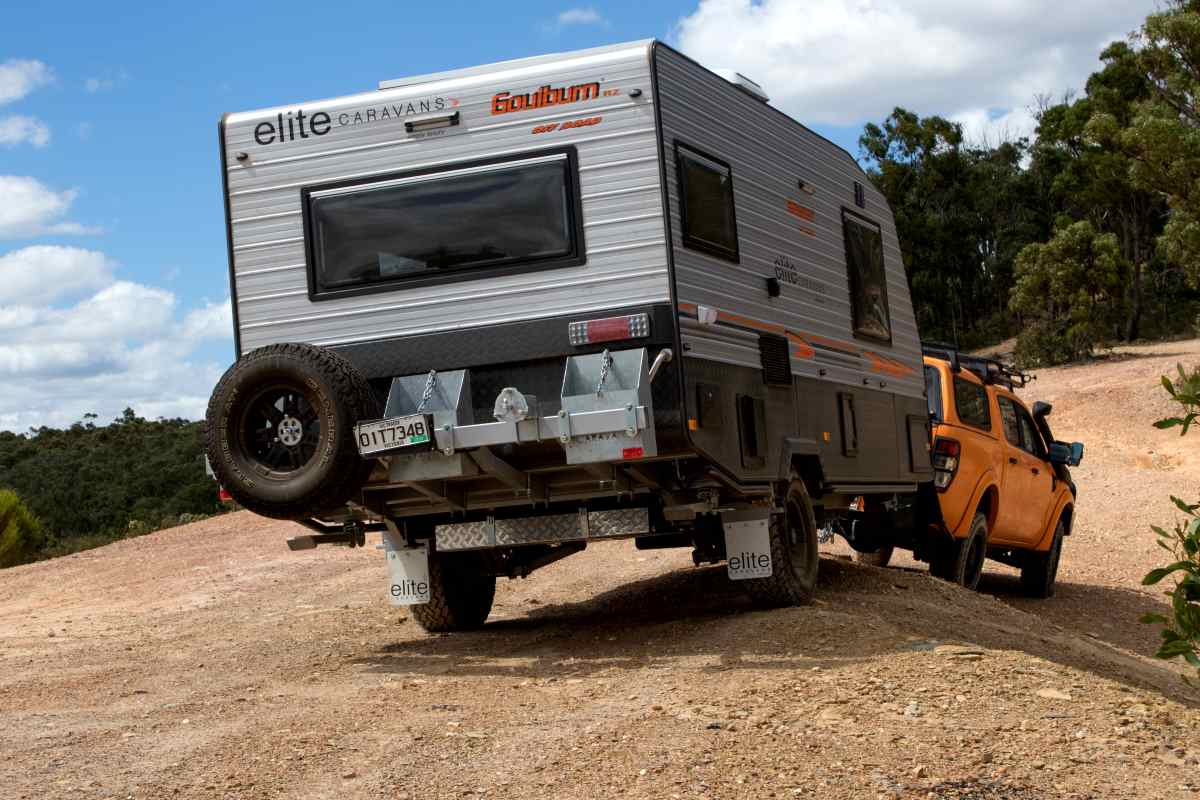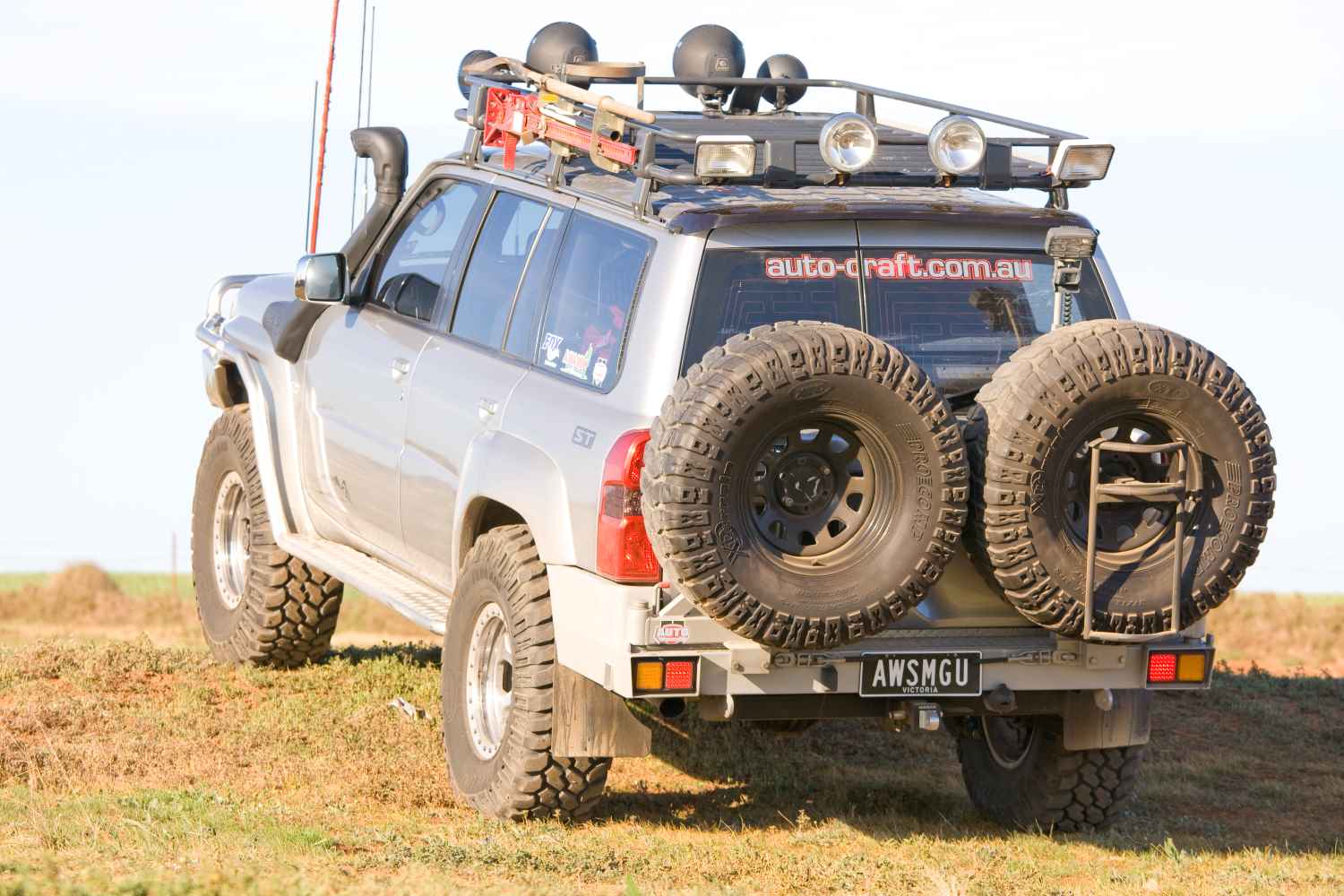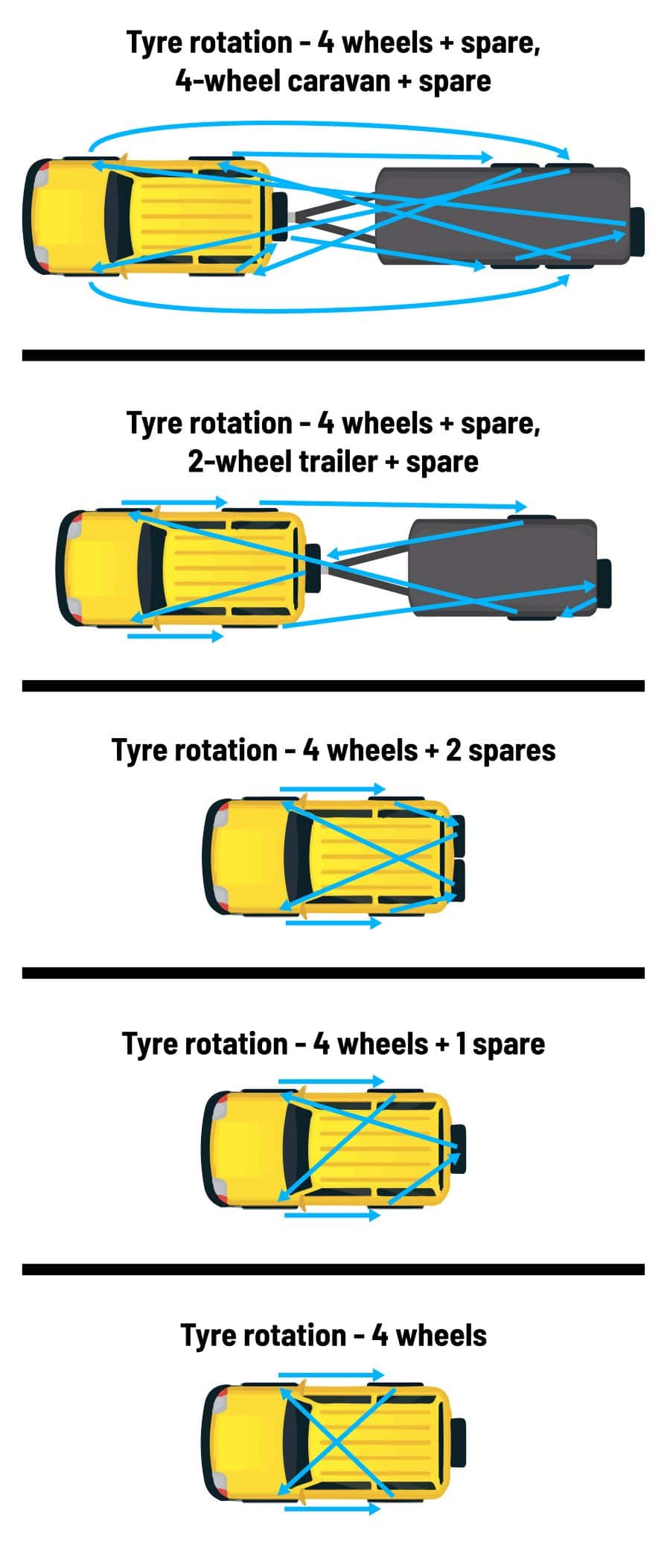Tyre rotation for 4X4s: patterns, timing and pro tips
Learn how to rotate tyres on your 4X4 the right way. Get the best life from your rubber with these practical tips and rotation patterns.
Advertisement
Tyre rotation is the periodic swapping of tyres from place to place on a vehicle to even out wear patterns. This allows you to get the best life out of your tyres.
Of the five tyres on your car, including the spare, each one has a different wear pattern. Wear factors on the front axle compared with the rear include whether it is a ‘drive’ tyre or not (some 4X4s are part-time); if it is a steer tyre on the front axle; and the different alignment settings such as camber, caster and toe, not to mention different suspension designs and settings.
There’s even variation across an axle as well. The weight on the tyre varies front left to right, and as Australian roads tend to have a camber sloping right to left, that gives a different wear pattern too. Take a breath. And then there’s the assumption you run precisely the same tyre pressure in each tyre all the time, which isn’t humanly possible. And even if you did set it cold, the differing demands on each tyre would see them heat up differently and result in different running temperatures.
So, for any vehicle, whether it’s a 4X4 or not, each of the four tyres has a different wear pattern, which means the tyres won’t wear perfectly evenly. For example, most independent front suspension vehicles run a little bit of negative camber, so the inside of the front tyre wears a bit more than the rear tyre, which is probably on a solid axle with no camber adjustment possible.
There are no fixed rules as to exactly how and when you rotate tyres, but there are some guidelines to consider. The first is whether you can actually rotate tyres or not as not all tread patterns can be easily rotated.
Most common is symmetrical and asymmetrical tread. You can see in the images below that one of these tyres has a symmetrical tread and the other is asymmetrical. Both can be used on any corner of a vehicle, but the symmetrical tyre can be mounted on a rim facing in or out, whereas the asymmetrical tyre has an ‘out’ marking to ensure it is fitted correctly.


Rare for 4X4s is a staggered tyre design, where the front tyres are smaller in diameter and width than the rear. These are found most obviously on tractors, but also high-performance sports cars such as those from Lotus, the Ford Mustang, and even high-performance SUVs, such as the BMW X5M. In these cases, you cannot rotate tyres from front to rear for obvious reasons.

The major disadvantage of directional tyres is that you can’t swap them left to right on a vehicle unless you remove the tyre from the rim, turn it 180 degrees, and remount it. That, and the fact they aren’t good in reverse, means we don’t recommend them for touring 4X4s. You do see them on high-performance cars, race cars and competition 4X4s, though.
If you do run directional tyres, then you can only swap your tyres front to rear on the same side, unless you remove and remount. You’ll know if you run them because the tread pattern is quite different to non-directional, and there will be a curved arrow on the side saying ‘rotation’.
Assuming you have five regular, non-directional 4X4 tyres, then you have two basic choices – to include the spare in your rotation plan, or not. The pro to using your spare is that you’ll increase the overall tyre life by one-fifth. The pro to not using your spare is that if you have a puncture, then you have a brand new tyre with maximum tread depth and therefore the least possibility of another puncture. Also, if you need to use your spare, and if you go through a set of four tyres well before they age and buy another identical set, then you need not replace the spare.
However, I’d only run that strategy if your spare will be no older than five years at most, so that’s two sets of tyres worn out in five years.
Not really. One myth is that you shouldn’t rotate radial tyres to run in a different direction to their original direction. This is not true; you can run them rotated. The biggest danger is extending tread life so far that the tyres age and become hazardous as a result.

If you have a trailer, then you should definitely include it in the rotation of tyres if the tyres are matched to the ones on your 4X4 (which is good practice). The trailer tyres usually won’t wear out anything like as quickly as the tow vehicle, because there’s less weight on them. Typically a lot less kilometres too, and they don’t need to steer, drive or do as much braking.
Again, once your tyres get beyond about five years of age, replace them regardless of tread depth, as old tyres don’t grip and are prone to failure.

It depends on the wear rate, which is a function of the vehicle, your driving style, and how fast you rack up the kays. The tyre also wears more quickly earlier in its life. So, as a rough guide, work on 5,000km for the first rotation, 10,000km for the second, then every 10,000km after that. However, look at wear patterns to determine a more accurate rotation regime.
If you see uneven wear on your tyres, then your alignment may need fixing, but if it’s just normal wear and tear, drop down to 5000km, or up to 15,000km if all seems to be even. And don’t assume your new set of tyres will wear the same as your previous set if they’re a different model, as different tyres wear differently. A service is a good time to rotate the tyres as the wheels need to come off (or should) as part of the service. Ensure you give your mechanic a clear diagram if you have a rotation preference.

The hardest part about rotating tyres yourself is keeping track of which tyre is which and where it’s going. I’d suggest marking each tyre with chalk before they come off the vehicle, so you don’t get confused, and printing off your tyre rotation guide. The actual rotation is easy – you’ll need a workshop jack, four axle stands, a torque wrench and an impact wrench. You can do it with less tools, but who has time in their life for that. And the key thing to remember is that at least two wheels need to be in the air for any rotation to happen – it’s just easier if all four wheels are off at the same time.
Jack the car up and onto axle stands, pull all the wheels off, and then while you’re there, inspect brake pads, rotors, brake lines and the like as well as inspect the entire tyre for damage, plus give it a pressure check. Rotate the wheels around and then refit, check torque, and then again after you’ve driven a bit, then relax safe in the knowledge you’ve saved yourself a bit of tyre money and done a little to improve the all-round performance and safety of your 4X4.
Take a look at our diagram below for ideas on rotation patterns.
These are not the only possibilities and yours will depend on which tyres you want to rotate and how.
